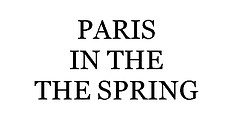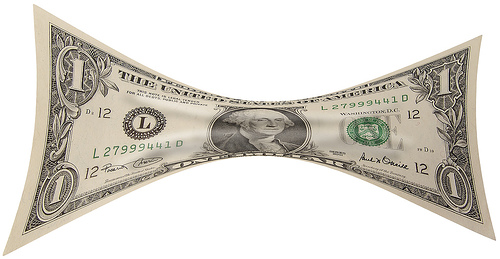What does this say?

Read it again.
What does this say?

Read it again.
An intelligent and very respectable gentleman, named Ebenezer Snell, who is still living, at the age of eighty and upwards, was in a corn-field with a negro on the 17th of June, 1776, in the township of Cumminton, Mass., one hundred and twenty-nine miles west of Bunker Hill by the course of the road, and at least one hundred in an air-line. Some time during the day, the negro was lying on the ground, and remarked to Ebenezer that there was war somewhere, for he could distinctly hear the cannonading. Ebenezer put his ear to the ground, and also heard the firing distinctly, and for a considerable time. He remembers the fact, which made a deep impression on his mind, as plainly as though it was yesterday.
— Charles Bombaugh, Facts and Fancies for the Curious From the Harvest-Fields of Literature, 1860

Portland, Oregon, was nearly named Boston.
Founder William Overton owed money to benefactors in Boston and in Portland, Maine. A coin toss in 1845 decided which city would give its name.
abligurition
n. excessive spending on food and drink
a + b = c
4a – 3a + 4b – 3b = 4c – 3c
4a + 4b – 4c = 3a + 3b – 3c
4(a + b – c) = 3(a + b – c)
4 = 3

Lightning-prints are appearances sometimes found on the skin of men or animals that are struck by lightning, and are currently believed to be photographic representations of surrounding objects of scenery.
At Candelaria, in Cuba, in 1828, a young man was struck dead by lightning near a house, on one of the windows of which was nailed a horse-shoe; and the image of the horse-shoe was said to be distinctly printed upon the neck of the young man. On the 14th of November, 1830, lightning struck the Chateau Benatoniére, in Lavendée. At the time a lady happened to be seated on a chair in the salon, and on the back of her dress were printed minutely the ornaments on the back of the chair. In September, 1857, a peasant-girl, while herding a cow in the department of Seine-et-Marne, was overtaken by a thunder-storm. She took refuge under a tree, and the tree, the cow and herself were struck with lightning. The cow was killed, but she recovered, and on loosening her dress for the sake of respiring freely, she saw a picture of the cow upon her breast.
— Frank H. Stauffer, The Queer, the Quaint and the Quizzical, 1882

It’s been known since 1876 that 267-1 isn’t prime, but for decades no one knew what the factors were.
Then, at a meeting in 1903, mathematician Frank Nelson Cole gave an hourlong “lecture” in which he didn’t say a word. On one chalkboard he expanded the value of 267-1:
147,573,952,589,676,412,927
On another he wrote:
193,707,721 × 761,838,257,287
Then he multiplied those values by hand. The two boards matched. He had found the factors. Cole returned to his seat amid a standing ovation.
He later admitted that finding the factors had taken “three years of Sundays.”

Let’s play a game. We’ll take turns bidding for a dollar bill. Both of us will have to pay our final bids, and the winner gets to keep the dollar.
Not surprisingly, the bidding will soon reach 99 cents. But then I’ll bid $1.00, giving up any hope of profit but getting at least the dollar for my trouble. And then you’ll bid $1.01, with the same idea. And so on indefinitely: First we were bidding for gain, but now we’re trying to minimize our losses.
It sounds absurd, but this game has led people to pay $5 for a $1 bill. Yale economist Martin Shubik invented it to show how an irrational decision can be reached by perfectly rational steps.
(Thanks, Cody.)
Niagara Falls paused on March 29, 1848.
An ice jam upstream stopped almost all water flow for 30 hours.
Maine science teacher Roger Bennatti once perched an unwrapped Twinkie on his blackboard to see how long it would take to go bad.
That was 30 years ago. “It’s rather brittle, but if you dusted it off, it’s probably still edible,” Bennatti told the Associated Press in 2004. “It never spoiled.”
(This is not a myth.)